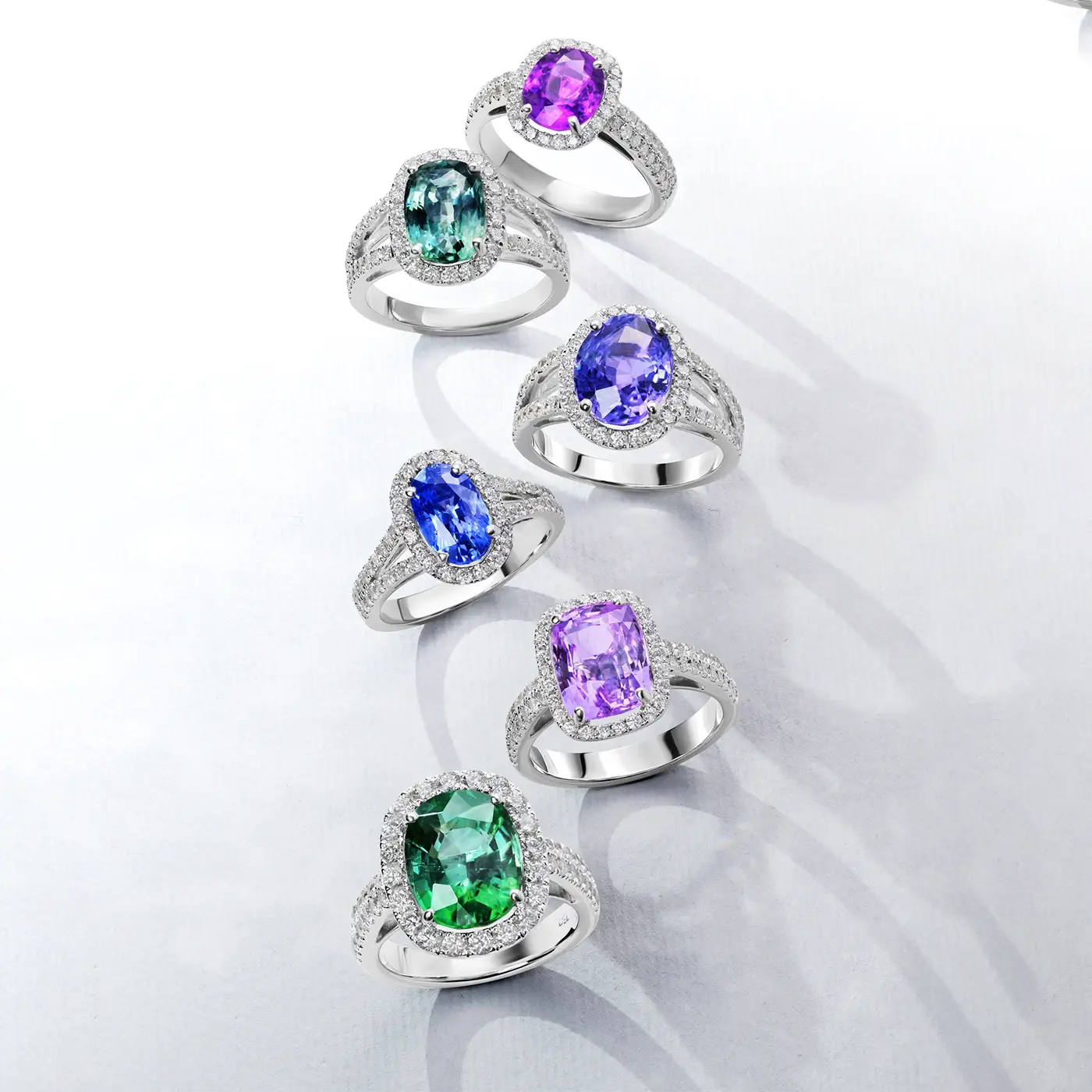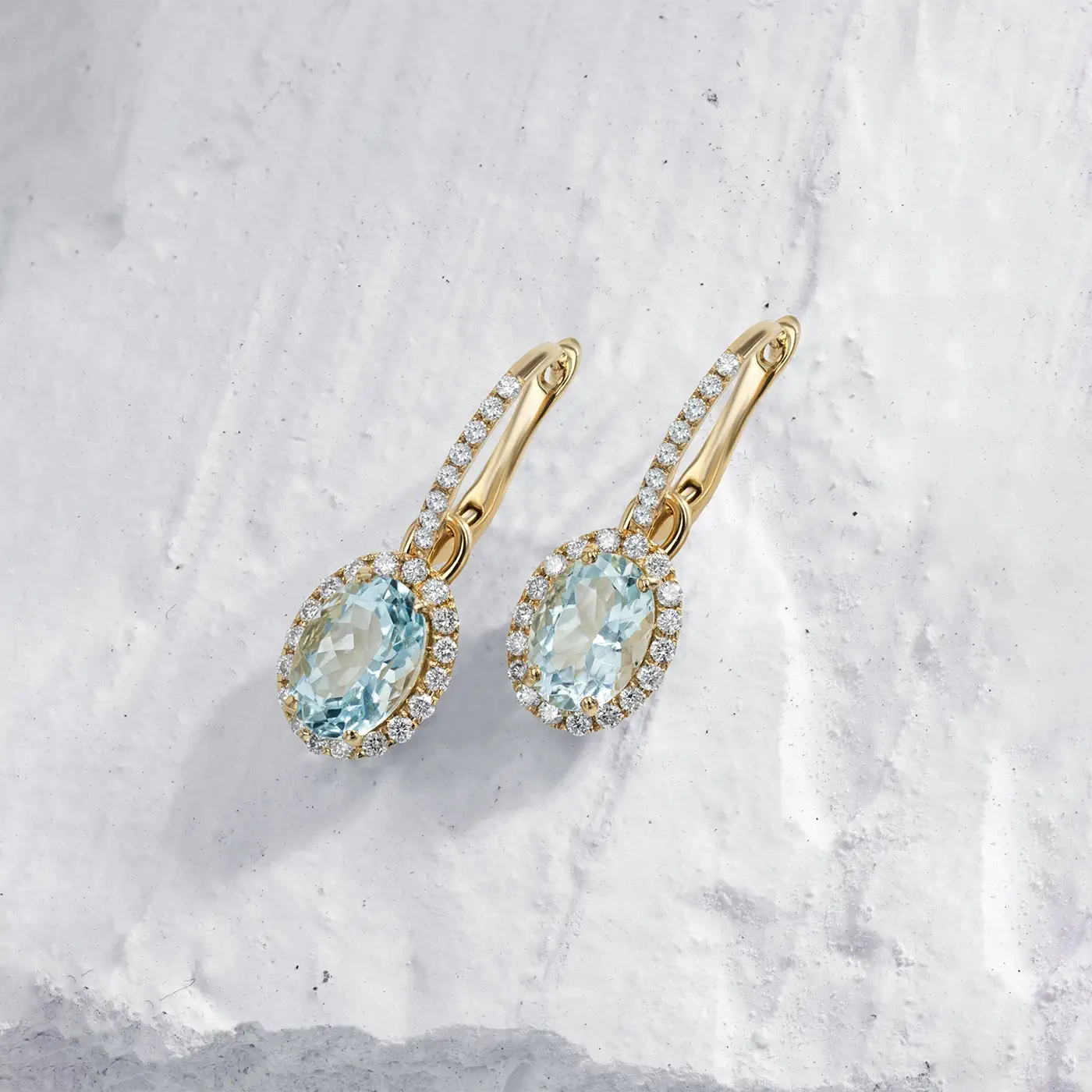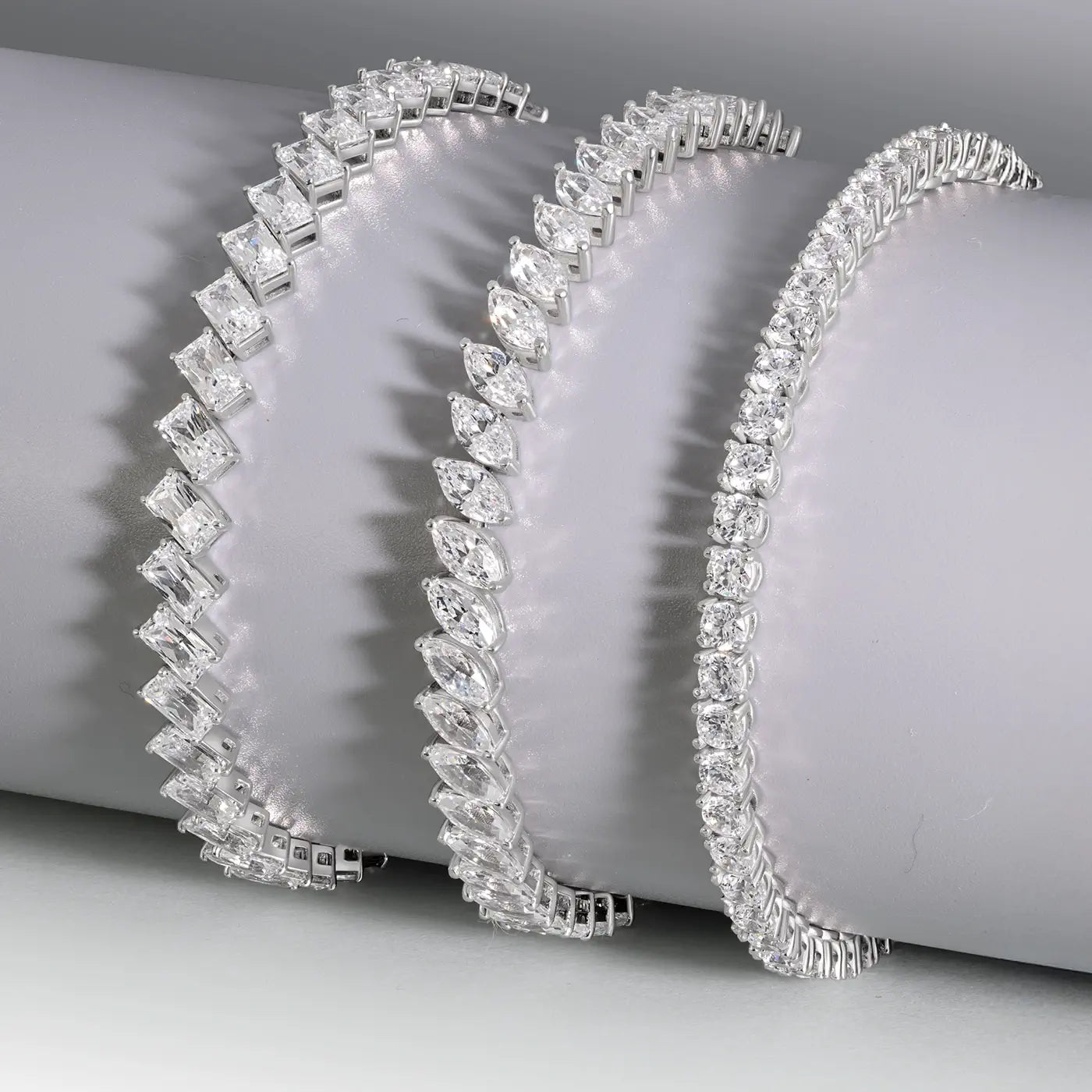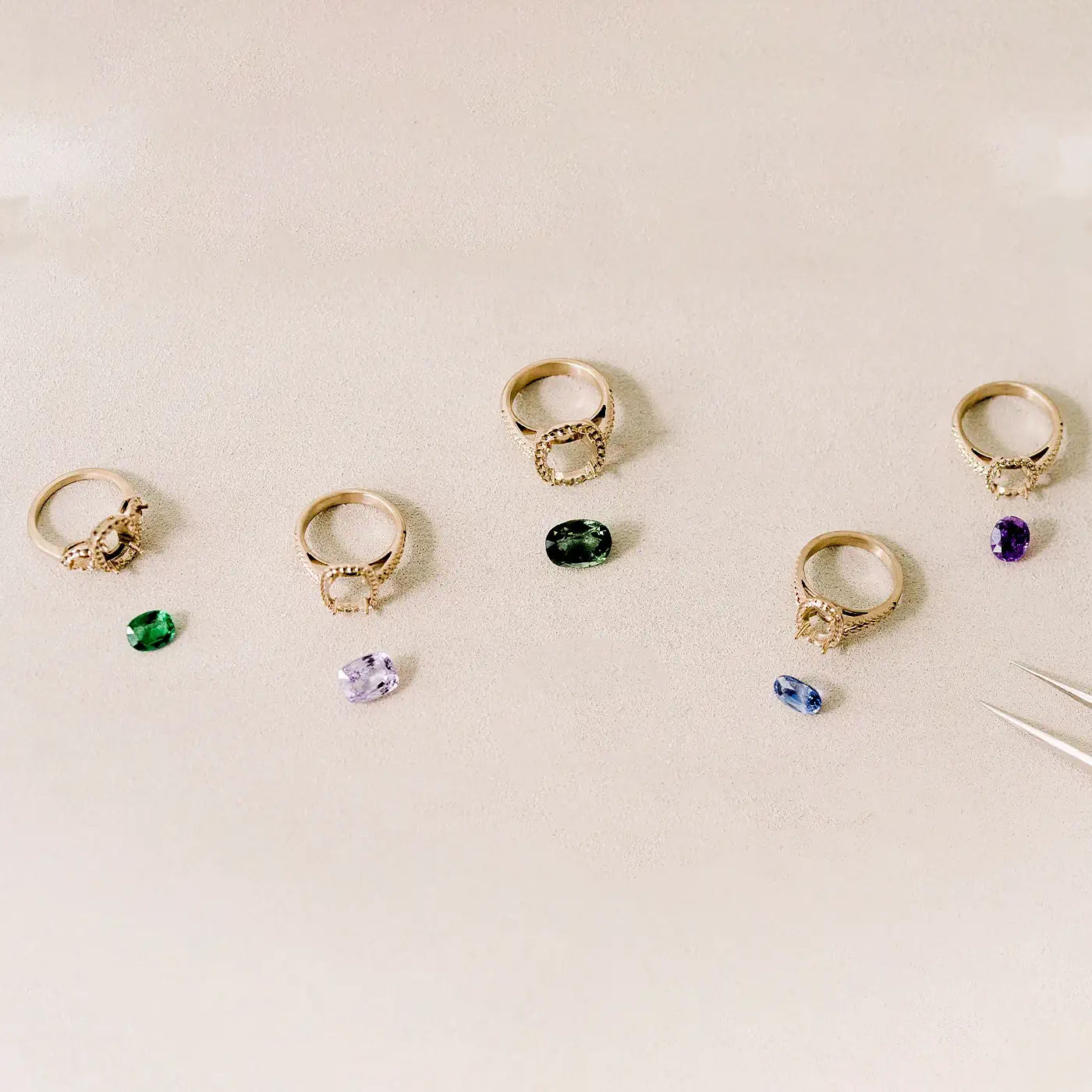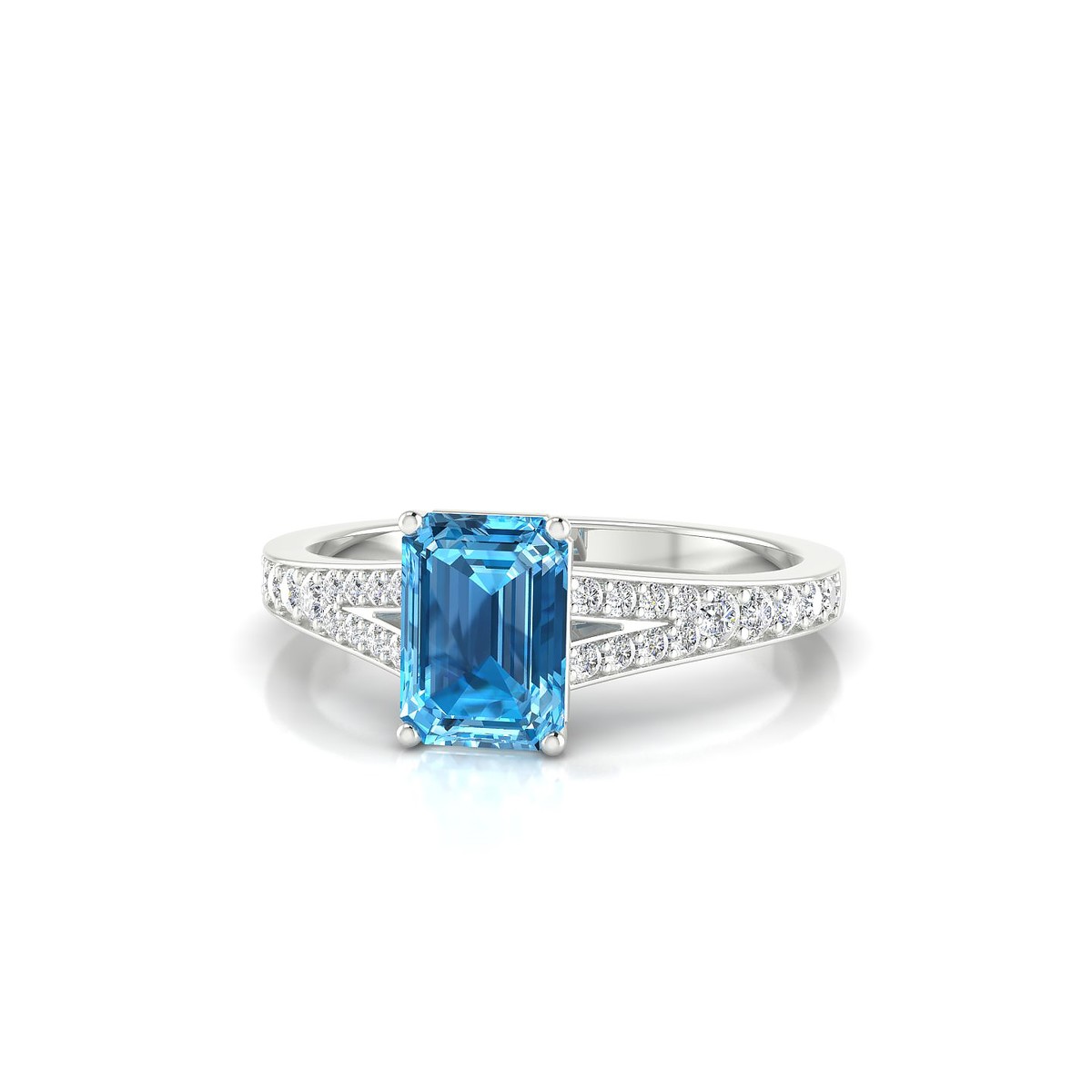ENCYCLOPEDIA
Topaz Full Guide

Topaz is a versatile gemstone that comes in a wide range of colors, but it’s most celebrated in its blue, golden, or champagne tones. Known for its clarity and brilliance, topaz has been treasured since antiquity as a symbol of strength, balance, and inspiration. Its name likely comes from the Sanskrit tapas, meaning “fire.” Topaz is the birthstone for November and is associated with the 23rd wedding anniversary. It pairs beautifully with both minimalist and classic jewelry styles.
Characteristics of the Topaz
Etymology: The name comes from Topazios, the Greek name for the island of Zabargad in the Red Sea, where they first mined peridots, which were falsely named green topaz.
Family: Topaz
Chemical Composition: Aluminum Fluorosilicate
Hardness: 8 on the Mohs scale
Density: 3.49 – 3.57
Optical Properties: Pleochroism, showing different colors depending on the crystal direction.
Refractive Index: 1.609 to 1.643
Birefringence: 0.008 - 0.011
Crystal System: Orthorhombic

The origin of Topazes
Topaz deposits can be found in numerous locations around the world.
Here are the primary sources of topaz:
- Brazil
- United States
- Madagascar
- Myanmar
- Namibia
- Russia
Carat
The carat is the standard unit of measurement for the weight of gemstones. One carat is equal 200 milligrams.
It should not be mistaken with karat, which is the standard indicator for the purity of gold.
Topaz are denser than the average, meaning they will often be smaller than other stones of equivalent weight.
The color of the Topaz
In its natural state, the topaz has a wide range of colors, including green, yellow, pink and purple, but it is also commonly found in a colorless state
However, the most famous colors for the Topaz are the following three shades of blue called:
- Sky Blue: as its name indicates has a light blue color reminiscent of the sky
- Swiss Blue: the color is more intense than the Sky Blue, more electric
- London Blue: it is a darker shade from the aforementioned Sky and Swiss Blue, and often has a greenish tint.
To obtain such colors, colorless topazes will go through irradiation, which will turn them brown, then heat to give them the blue color.
Another famous color is the Imperial Topaz, a reddish orange shade that can occur naturally but is very rare. Imperial Topazes are only found in Brazil.
Discover our Guide on the Colors of Gemstones.


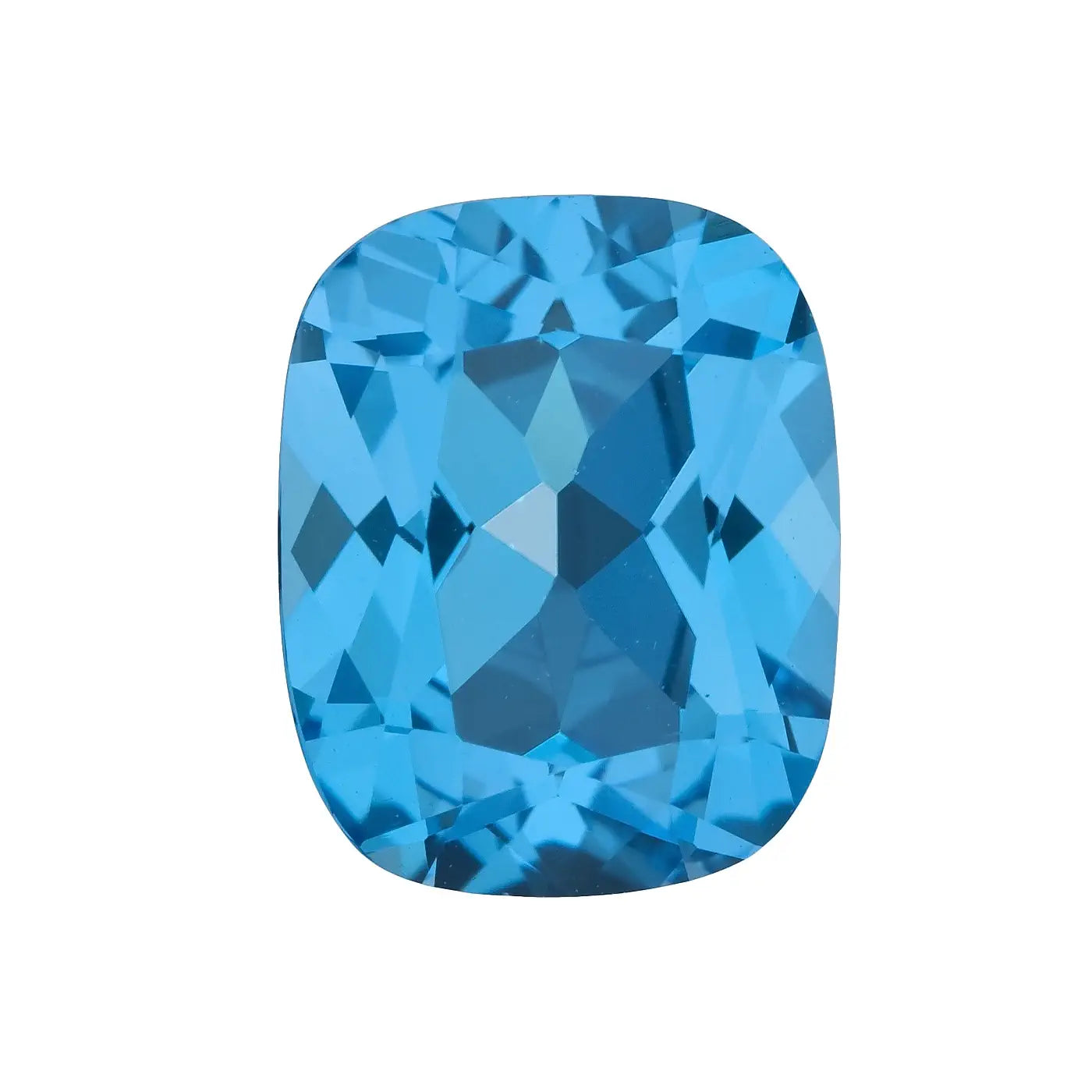



The clarity of Topazes
Most blue Topazes on the market are eye-clean, meaning they are without discernable inclusions. The main reason for this is that during the irradiation process to give them the blue color, the temperature of the stones increases too quickly and inclusions cause them to crack.
In other colored topazes, the inclusions can be filled with liquid or gas.
Cut & Shapes
Due to the pleochroism of topazes, the direction in which the stone is cut from the rough is very important, as it is what determines its final color. Topaz naturally forms in large crystals, which allows to cut larger stones. It is not rare to find topazes of different colors over 10 carats
On the jewelry market, Topazes can be found in the standard round shape, oval shape or pear shape, but it is also appreciated in more Art-Deco styles such as the cushion cut when the stone is larger.

Round Shape Topaz

Oval Shape Topaz

Pear Shape Topaz

Princess Shape Topaz

Emerald Cut Topaz

Cushion Cut Topaz
Birthstone & Wedding Anniversary
The yellow topaz is the birthstone for the month of November, while the blue topaz is the birthstone of December.
The blue topaz is used to celebrate the 4th wedding anniversary, while the imperial topaz is used for the 23rd wedding anniversary in the United States. In France, the topaz is used to celebrate the 44th wedding anniversary.
Discover our Birthstone Full Guide.
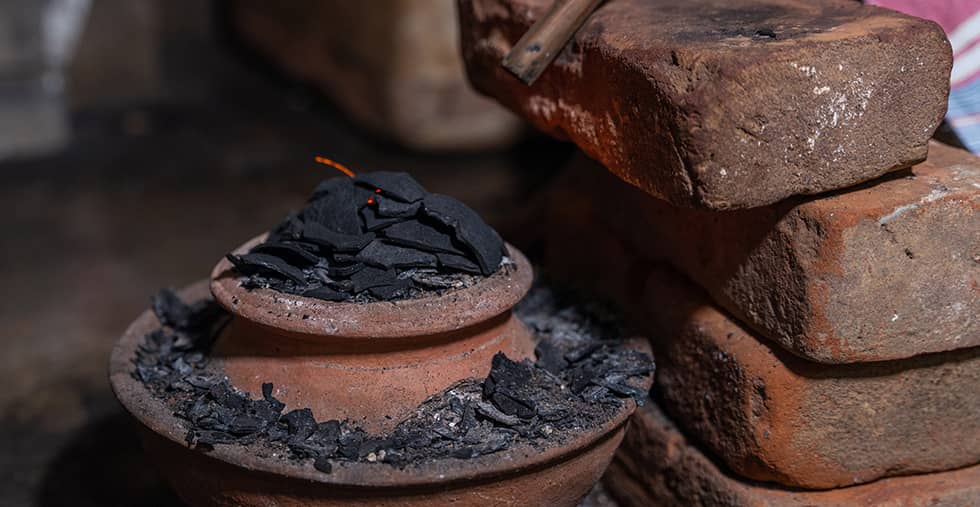
Treatment
Unlike the rubies and sapphires, who are subjected to heat treatment in their rough state, the topazes are going through treatment only once the cutting process has started, or even once it is finished. Lapidaries will get rid of most inclusions when cutting the stone, as they cause them to crack when subjected to heat.
Topazes will be irradiated to turn colorless or pink, red and violet stones into orange and brown topazes. The type, intensity and duration of the irradiation will directly influence the final color of the stone.
Subsequent heat treatment can then either reverse the process or turn brown topazes into blue topazes.

